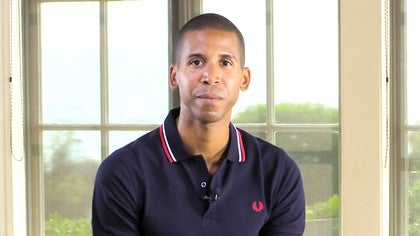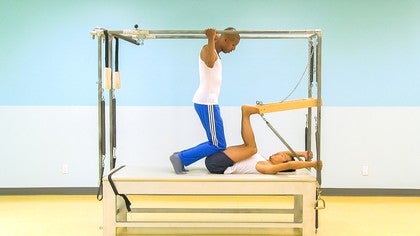Description
About This Video
Transcript
Read Full Transcript
My teacher Romana Crimson Houska gave him many contributions to the plot. His method, I think our greatest contribution was though keeping the work as is. Ramana believed that the work was beautiful as it was and it didn't need to be changed. And one of my friends and contemporaries, Amy Alberts, one said she believed that it was because Romana was a ballet dancer and in ballet it has a form, it has a structure and you don't deviate from that structure. And that was Ramana's beliefs. She believed that plots had a structure, it had a purpose and it was good, good already as it was and it didn't need to be changed. And I believe that was a great contribution because a lot of times we need to know where we came from and if there is a change that is going to be made, we can decide and we can link where those changes happened.
Ramana said, plotty is, is a workout and every plot is studio. When you come into the front door above it should say this is a workout. And so w Ramana believed that there's two different individuals that you can teach to, you can teach to the normal healthy individual. And then there were also individuals that needed special attention, but she believed if there was a normal healthy individual, you taught the work as is and you taught it as a workout for the individuals who needed special attention. Um, Ramana was a genius and uh, she had many different approaches, many different techniques that she used. One of those techniques was called asymmetrical movement patterning.
Ramana herself did not call it that, but that essentially is what she was doing. She would look at her body and she see, okay, this part of the body, maybe it might be a little bit too loose, this part of the body, maybe a little bit too tight. She would say, how am I going to balance that out? So she had maybe focused on tightening the loose side more or loosening the tight side. And so she would go maybe from one to the next and then go back to the first side. For example, if she needed to tighten the loose part, she would focus on the loose part, then she'd go to the tight part, and then she would actually go back into, uh, working the, uh, or making sure the loose part got a little bit more tight. Or she would see that there was a weakness in one part of the body and the other party part of the body had a little bit more strength.
So then what she would do is she'd say, okay, I'm going to focus now on the part that's a little more weak, but I'm not gonna neglect the part that is stronger. So I'm going to still focus on that. But then let's go back to the part that is a little bit more weak so I can kind of catch it up and balance it out. Another great contribution that Ramana gave was her ability to work hands on. So her hands on approach.
One of Romanos teachers and mentors was Clara plots, and Clara politics was called the sculptor because she would mold the body. She would put her hands in the body and motor like clay Romana had that same ability and she taught students how to have the best effect when working on hands-on. Romana had two students. One was named Phillip Friedman and the other one was Gail Eisen and they wrote a book called the [inaudible] method of physical and mental conditioning and in that book they laid out six key principles to the place method and these six key principles were influenced by them watching Romana teaching, the plot, his work, and those six key principles where centering concentration, control, precision, breath and flow. And Ramana was very, very big in flow. She believed that one exercise should flow right into another exercise right into the next exercise.
She also believed that within those exercises you should get be very direct. So you go right from point a to point B. You don't go all the way around the corners to get to where you need to go. She would say minimum minimum of movement, some that she once told a story about, if you're going to do an arabesque, you're going to just step on your toe and be there. You're not going to go top, top, top, top, and then get there. She said, you put your foot where you want it to be and you'd be there right at that moment. And that is an example of how Romana believed the plot. His methods should be executed with a flowing dynamic.
Probably the greatest contribution of Romanos being who she was. She was a very loving person, a very caring person, a very nurturing person, pretty much a typical cancer in the Zodiac. And, um, Romana had the strength to inspire her. Students loved her. I loved her, and she's fired so many people. I think the reason why she inspired so much, it's because she had a very strong spirit.
And in the POTUS method we talk about the plot is method being mind, body, and spirit. And Romana definitely gave her spirit to us and I feel like it is our duty then to give that spirit to the next generation.
Pilates Legacy Project: Romana Kryzanowska Methods
Comments
The United States Pilates Association
The Pilates Legacy Project
You need to be a subscriber to post a comment.
Please Log In or Create an Account to start your free trial.















